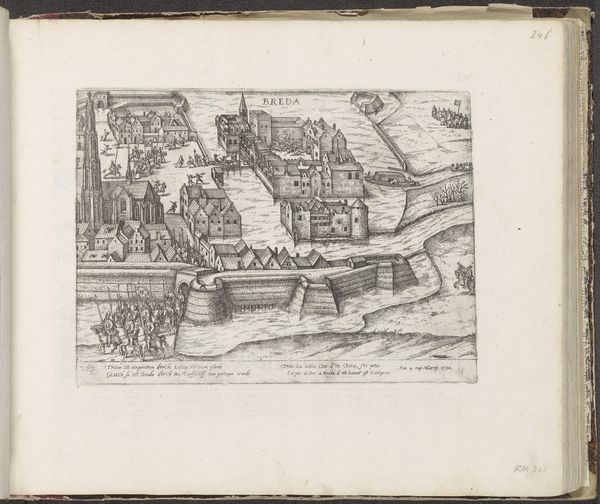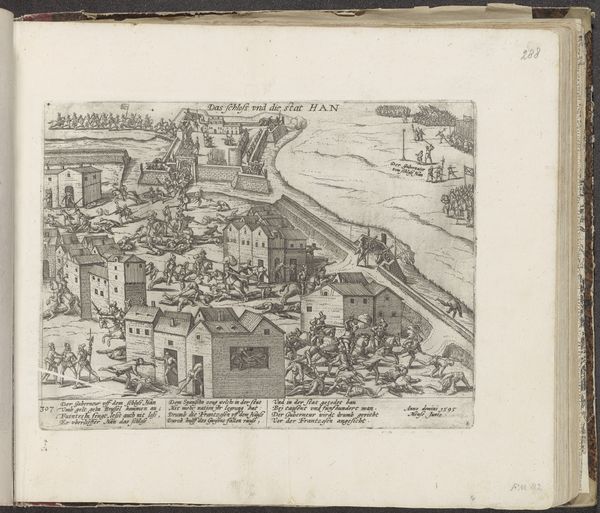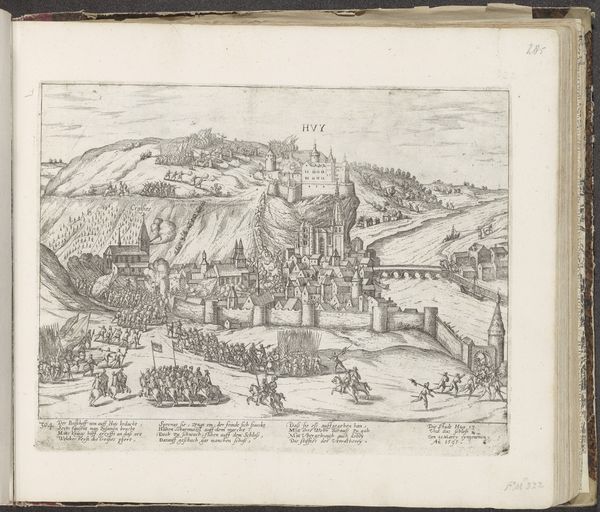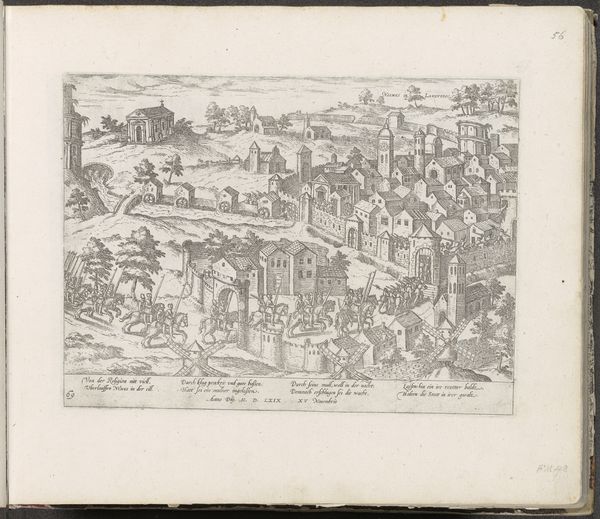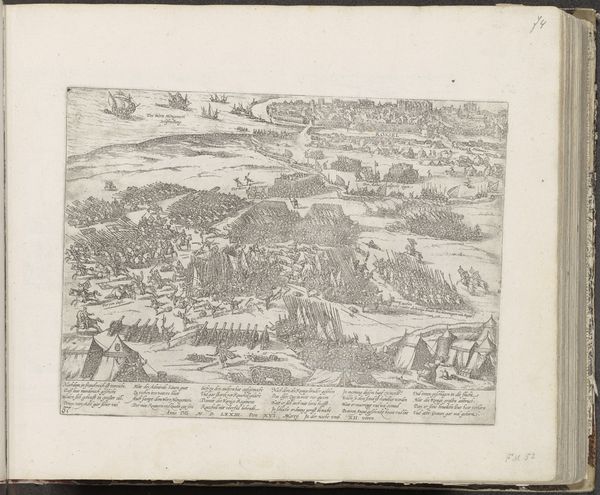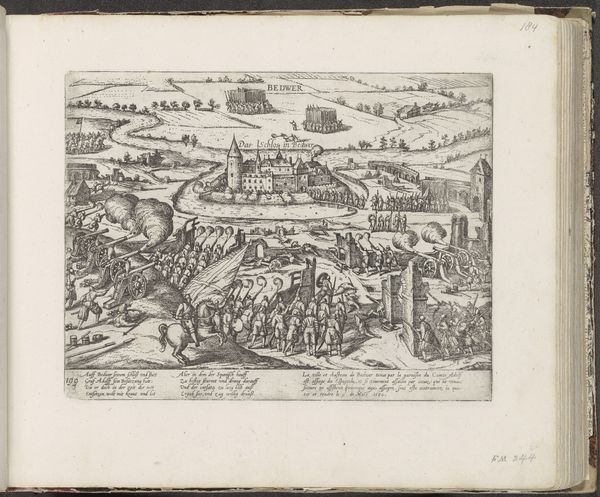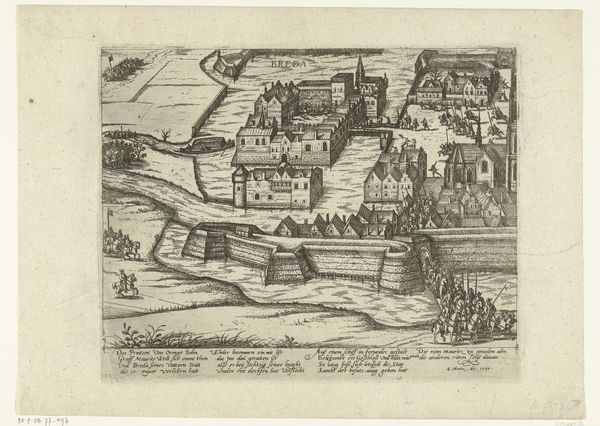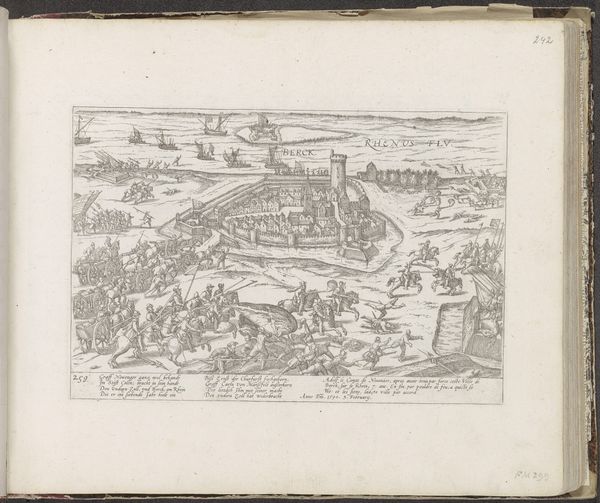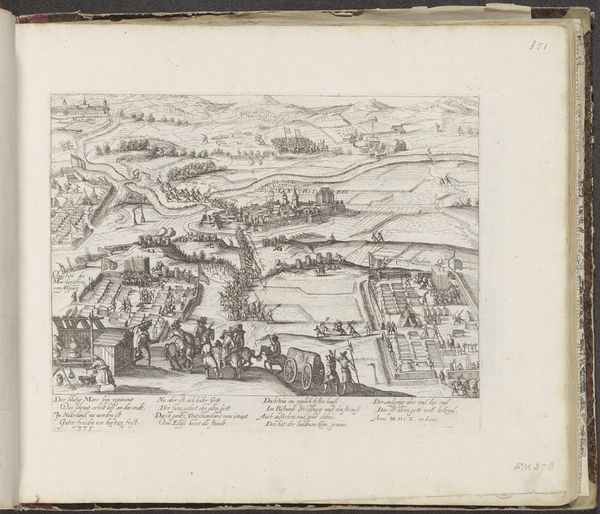
print, engraving
#
aged paper
#
toned paper
#
medieval
# print
#
pen sketch
#
sketch book
#
landscape
#
personal sketchbook
#
ink drawing experimentation
#
pen-ink sketch
#
pen work
#
sketchbook drawing
#
cityscape
#
history-painting
#
sketchbook art
#
engraving
Dimensions: height 210 mm, width 298 mm
Copyright: Rijks Museum: Open Domain
Editor: So, this is Frans Hogenberg's "Bossu valt Rotterdam binnen, 1572", created sometime between 1574 and 1578. It's an engraving, a print, showing a cityscape under siege. I'm struck by the detail he manages to achieve with such a precise, linear medium. What speaks to you about this piece? Curator: I see here the convergence of materials and socio-political context. Hogenberg, using the readily available and reproducible medium of engraving, disseminated visual accounts of the Eighty Years' War. This wasn't just "art" – it was propaganda, news, and a commodity circulated amongst a burgeoning literate public. The very *act* of creating and distributing these prints democratized information, challenging the established power structures. Editor: That’s a fascinating point – I hadn't thought about the role of printmaking itself in the story. It’s more than just a historical record; it's active participation. Do you think the choice of engraving impacts the message? Curator: Absolutely. Engraving, unlike painting, lends itself to mass production. Consider the labor involved – a skilled artisan meticulously carving the image into a plate, enabling countless impressions. Each print becomes a carrier of information, reaching a wider audience and shaping public opinion on the events depicted. The paper itself becomes a crucial element; think of its trade, its availability and its physical presence. Editor: So, the materiality of the print, from the ink to the paper, is inseparable from its political and social function? Curator: Precisely. The "Bossu valt Rotterdam binnen, 1572" transcends a mere depiction of a historical event; it's a product of its time, reflecting the socio-economic and technological forces at play. Its value lies not only in its aesthetic qualities but also in its function within the broader context of information dissemination and political struggle. Editor: That gives me a whole new perspective. I was initially drawn to the visual detail, but now I see the deeper implications of the material choices. Curator: Indeed, seeing the means of production lets us perceive art as part of its social process, embedded within historical narratives.
Comments
No comments
Be the first to comment and join the conversation on the ultimate creative platform.

